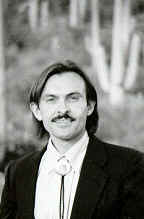Approximately 30 years ago, life expectation for Indigenous peoples in Canada, New Zealand and the United States of America was, like Indigenous peoples in Australia today, significantly lower than that of the respective non-Indigenous populations of those countries.
However, significant gains in life expectation by Native Americans and Canadians and the Maori have been made in recent decades. Today, Australia has fallen significantly behind in improving the life expectation of its Indigenous peoples. Although comparisons should be made with caution (because of the way different countries calculate life expectation) data from the late 1990s suggests Indigenous males in Australia live between 8.8 and 13.5 years less than Indigenous males in Canada, New Zealand and the USA; and Indigenous females in Australia live between 10.9 and 12.6 years less than Indigenous females in these countries. [41]
For the period 2001--05, among the residents of Queensland, Western Australia, South Australia and the Northern Territory (jurisdictions where the data is deemed reliable), deaths recorded as being of an Indigenous person accounted for 3.2% of all deaths, higher than their presence as a percentage of the total population (as noted, estimated at 2.5%). [42]
In Queensland, Western Australia, South Australia and the Northern Territory combined, approximately 75% of Indigenous males and 65% of Indigenous females died before the age of 65 years. In contrast, in the non-Indigenous population 26% of males and 16% of females died aged less than 65 years. [43]
For the period 2001--05, Indigenous infant deaths represented 6.4% of total Indigenous male deaths and 5.7% of total Indigenous female deaths compared with 0.9% and 0.8% of the total for non-Indigenous male and female infant deaths. [44]
(b) Years of life lost
Years of Life Lost (YLL) is an indicator of premature mortality.
A 2003 study on the burden of disease and injury among Indigenous peoples found there were an estimated 51,475 YLL due to disease and injury for the Indigenous population, or approximately 4% of the total YLL for disease and injury for the total Australian population. [45] This is significantly higher than their presence as a percentage of the total population.
Cardiovascular disease was the leading cause of years of life lost accounted for around one-quarter of total YLL among Indigenous peoples; followed by cancer (14% of YLL); unintentional injuries (11%), intentional injuries (9%) and diabetes (7%). [46]
Indigenous infant and child health is significantly poorer than that of non-Indigenous infants and children. A 'low birth weight baby' weighs less than 2,500 grams at birth [47] indicating, among other things, foetal malnutrition. There is a growing body of evidence that suggests a malnourished foetus will program its body in a way that will incline it to chronic diseases later in life. [48]
Approximately twice as many low birth weight infants were born to Indigenous women compared to those born to non-Indigenous women over 2001 and 2004. [49] The ABS reported in 2005 that since 1991 there appears to be no change in both the rates of low birth-weight infants being born to Indigenous women and the mean birth weights of those infants. [50]
After significant reductions to the Indigenous infant mortality rate in the 1970s and 1980s, there was a levelling out of the rate in the mid 1990s. The decline is believed to have halted because of the generally poorer health of Indigenous mothers; their exposure to risk factors; and the poor state of health infrastructure in which infants were raised. [51]




